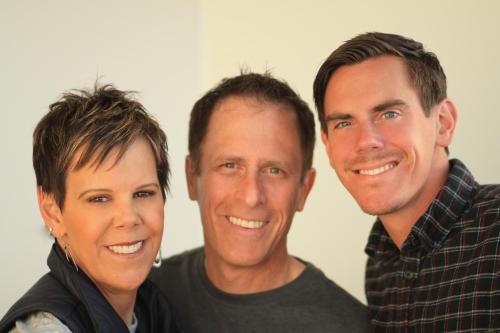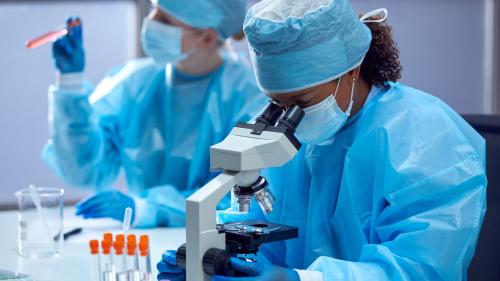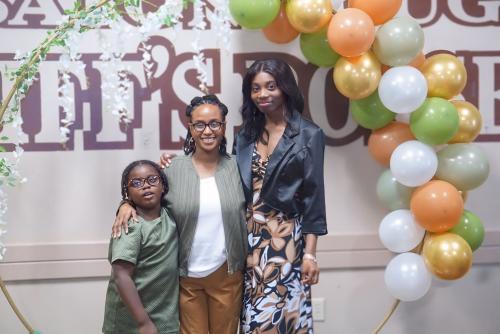
-
Understanding primary immunodeficiency (PI)

Understanding PI
The more you understand about primary immunodeficiency (PI), the better you can live with the disease or support others in your life with PI. Learn more about PI, including the various diagnoses and treatment options.
-
Living with PI
-
Addressing mental health
-
Explaining your diagnosis
- General care
- Get support
- For parents and guardians
-
Managing workplace issues
- Navigating insurance
-
Traveling safely

Living with PI
Living with primary immunodeficiency (PI) can be challenging, but you’re not alone—many people with PI lead full and active lives. With the right support and resources, you can, too.
-
Addressing mental health
-
Get involved

Get involved
Be a hero for those with PI. Change lives by promoting primary immunodeficiency (PI) awareness and taking action in your community through advocacy, donating, volunteering, or fundraising.
-
Advancing research and clinical care
-
Research Grant Program
-
Consulting immunologist
-
Diagnosing PI
-
Getting prior authorization
-
Clinician education
-
Survey research
-
Participating in clinical trials

Advancing research and clinical care
Whether you’re a clinician, researcher, or an individual with primary immunodeficiency (PI), IDF has resources to help you advance the field. Get details on surveys, grants, and clinical trials.
-
Research Grant Program
Two recent presentations, both provided by veterans in the field of treating children with severe combined immunodeficiency (SCID), offer an in-depth look at hematopoietic stem cell transplant, or HSCT (also known as bone marrow transplant), gene therapy, and the use of alternatives to chemotherapy for conditioning.
Dr. Neena Kapoor spoke to the community about “Severe Combined Immune Deficiency Disorders: Diagnosis and Therapeutic Interventions,” at the SCID Compass October 14 Lunch & Learn, and Dr. Mort Cowan presented his information, “SCID: Where are we and where are we going?” at IDF’s Rare of the Rare conference on September 26.
Dr. Kapoor is a professor of pediatrics at Children’s Hospital Los Angeles Keck School of Medicine, University of Southern California. Dr. Kapoor provided:
- An introduction to SCID and a history of treatment
- A presentation of SCID and how it’s diagnosed through newborn screening
- An explanation of prophylactic treatment and the hematopoietic stem cell transplant procedure, as well as the importance of the donor match
- An overview of complications from treatment including toxicity from chemotherapy and radiation, graft versus host disease (GVHD), and failure to engraft
- A discussion of clinical trials using human monoclonal antibodies as an option for conditioning
Dr. Cowan is a pediatric immunologist, Emeritus Professor of Pediatrics, and Medical Director of the Pediatric Cell Therapy Laboratory at UCSF Benioff Children’s Hospital. Like Dr. Kapoor, Dr. Cowan said that newborn screening for SCID, which now takes place in all the U.S. states, has pushed the survival rate for SCID from as low as 60 percent to greater than 90 percent. When babies are identified with SCID younger, then infection doesn’t have time to develop, and treatment is more successful.
“Newborn screening really has been life-saving, as far as I’m concerned,” said Dr. Cowan.
Dr. Cowan described stem cells as “little factories” that make all the cells in the blood and defects in the T, B, and Natural Killer cells (which are stem cells) cause SCID. Since the defects are in the stem cells, if you can replace those stem cells with donor stem cells through HSCT or correct the person’s own stem cells with gene therapy, then all the subsequent cells being made by those stem cells will be normal.
HSCT is the only accepted definitive therapy for SCID, explained Dr. Cowan, and is achieved by first finding a donor with normal stem cells. The best type of donor is an HLA-matched sibling. Everything else is considered an alternative donor including a half-matched related donor, an unrelated donor, or a cord blood donor.
Once a donor is found, doctors must prevent rejection of the donor cells and make space in the bone marrow to replace abnormal stem cells with normal stem cells. In order to accomplish this, the child with SCID receives chemotherapy to prevent rejection and/or make space in the bone marrow. The most common chemotherapy is Busulfan.
Dr. Cowan then discussed how graft versus host disease is the major complication from HSCT. Any organ is susceptible and GVHD be acute or chronic. It develops in 15 percent of cases with matched siblings and 50 percent of others. The treatment for GVHD is suppressing the immune system by removing the T cells, but that also increases the risk of infection because you need T cells to fight infections. The mortality rate from GVHD is 5 to 15 percent.
Dr. Cowan said an important question is can chemotherapy be made safer? High-dose chemotherapy can be toxic, around the time of administration as well aslater in life.
There is an ongoing clinical trial with all centers participating that is testing low-dose Busulfan with moderate-dose Busulfan to determine if good immune reconstitution can be achieved with the low-dose. The trial has the potential to alter the way that doctors are treating patients with SCID who are undergoing a transplant, said Dr. Cowan.
“This is really an exciting trial. It’s something that when we started the PIDTC 11 years ago when I came up with what our ultimate goal was going to be, it was to be able to do these prospective clinical trials in a multi-center fashion and it’s taken a while. The trial started probably about a year and a half ago and so it’s going to take a while before we have the answer, but I think this we’ll give us a lot of information,” he said.
Dr. Cowan also discussed gene therapy as a treatment for SCID and reviewed data on clinical trials for ADA-SCID, X-linked SCID, and Artemis SCID. In gene therapy, a child’s own stem cells are taken out, the gene in the cell is corrected, and the corrected cell is put back into the child using a vector. The vectors are viruses that have been inactivated and are known to have the capability of inserting their genes into the genes of stem cells.
The advantages of gene therapy are there is no need to search for a donor, and no risk of rejection or GVHD because a child’s own T cells are being used. Gene therapy also requires less chemotherapy than with a healthy donor, said Dr. Cowan.
The disadvantages are that there is a potential for leukemia, which happened in trials 15 or 20 years ago, said Dr. Cowan, but researchers designed better vectors and he thinks this risk is actually quite low. There’s also a false-positive HIV test that can occur depending on the type of vector and there is a risk of autoimmune hemolytic anemia in X-linked SCID and Artemis SCID, though it doesn’t seem any higher than with HSCT.
Dr. Cowan concluded with discussion on non-chemotherapy approaches to making space in the bone marrow. The approaches utilize monoclonal antibodies, targeting a single marker on a cell, and a number have been discovered that can target a stem cell in the bone marrow. The monoclonal agents work in the following ways:
- The antibody can directly induce stem cell death
- The antibody can be attached to a poison that kills the stem cell selectively
- The antibody attracts other immune cells that destroy the stem cell
There is an ongoing trial of the monoclonal antibodies that induce stem cell death at the University of California at San Francisco and Stanford University.
Click here to watch Dr. Cowan’s presentation.
Click here to watch Dr. Kapoor’s presentation.
Related resources
Sign up for updates from IDF
Receive news and helpful resources to your cell phone or inbox. You can change or cancel your subscription at any time.





The Immune Deficiency Foundation improves the diagnosis, treatment, and quality of life for every person affected by primary immunodeficiency.
We foster a community that is connected, engaged, and empowered through advocacy, education, and research.
Combined Charity Campaign | CFC# 66309




